Zotac Sonix NVMe SSD Review: Our First E7 Tests
Why you can trust Tom's Hardware
A Closer Look And Inital Performance Testing
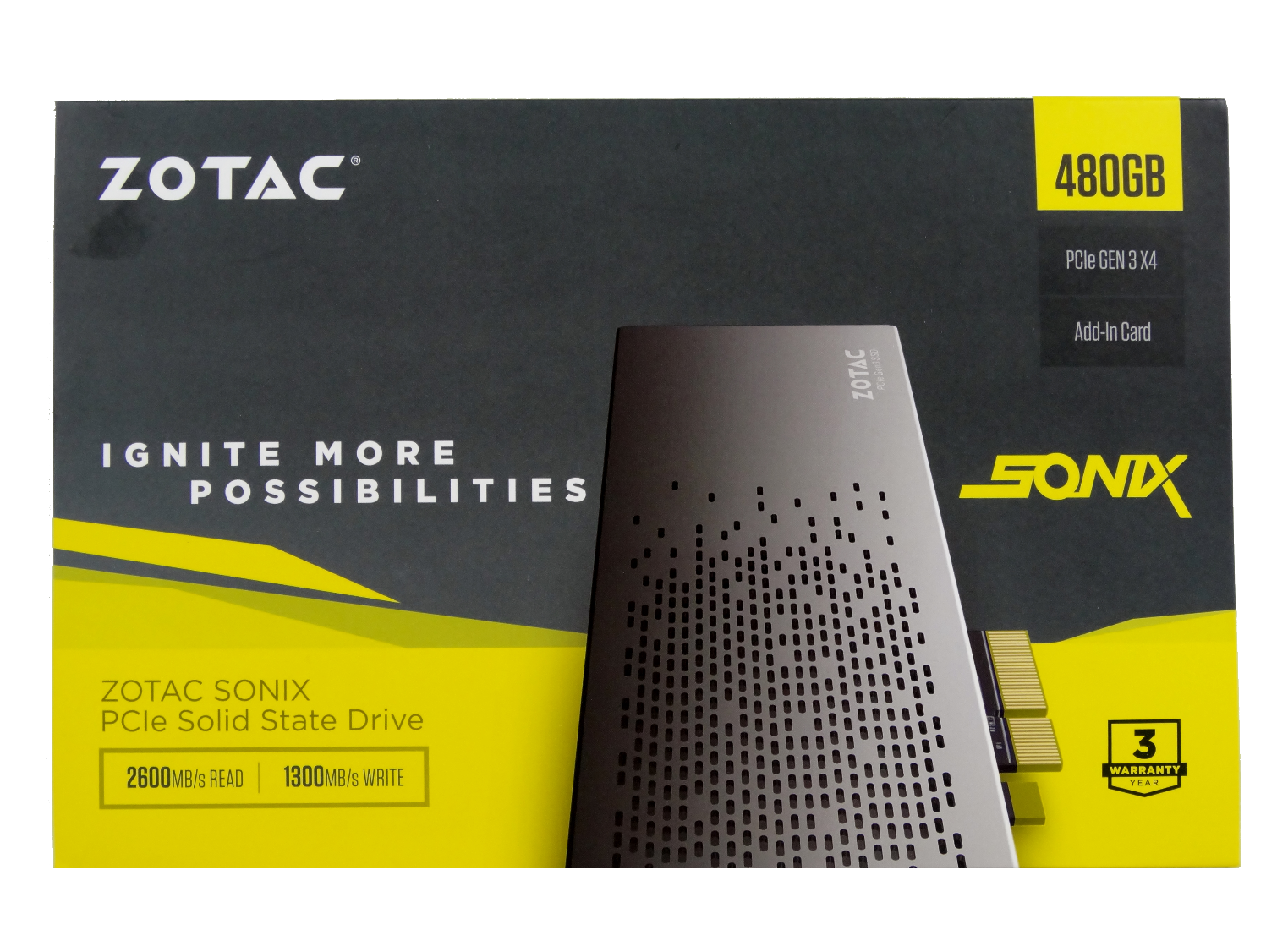
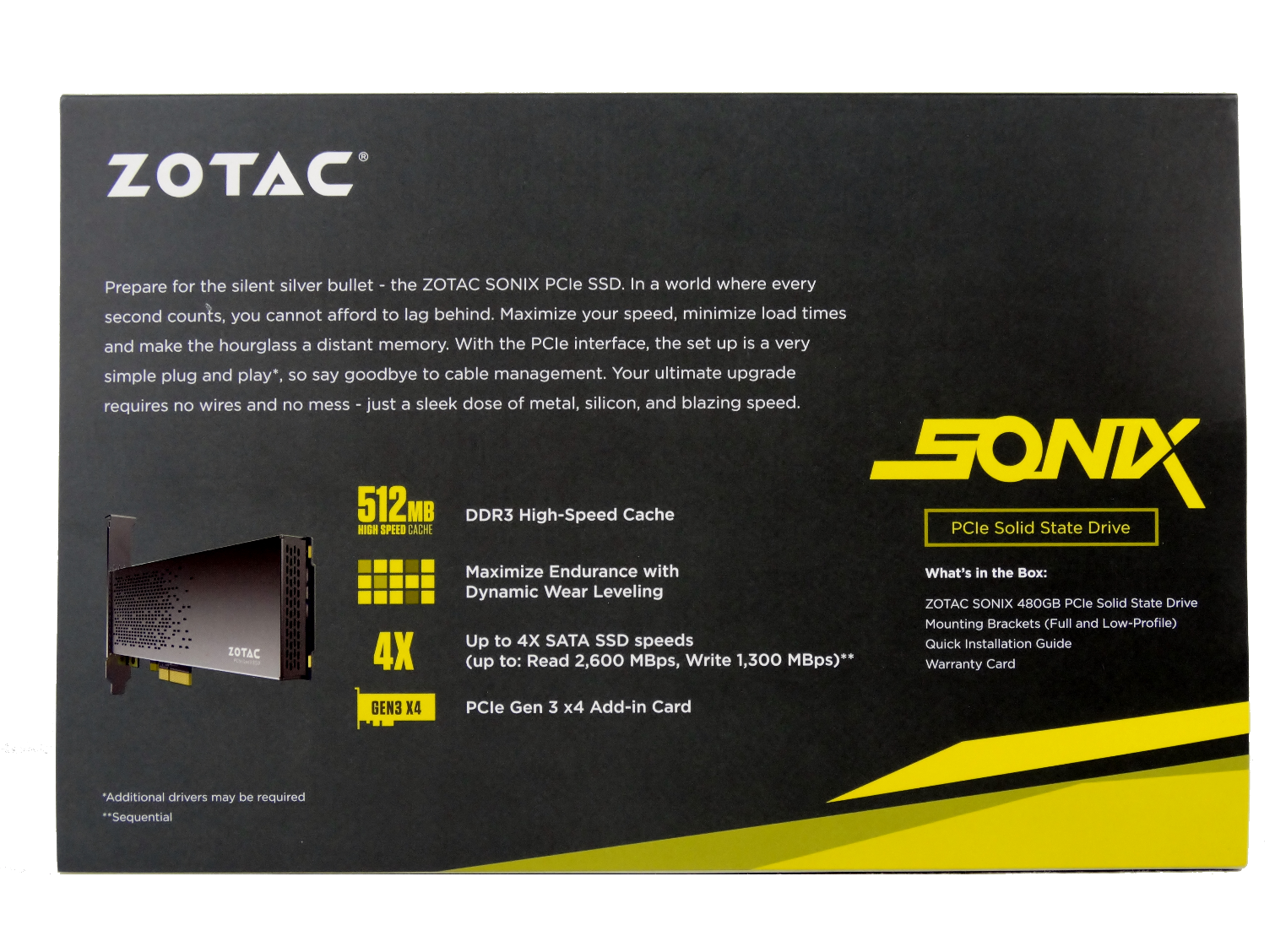
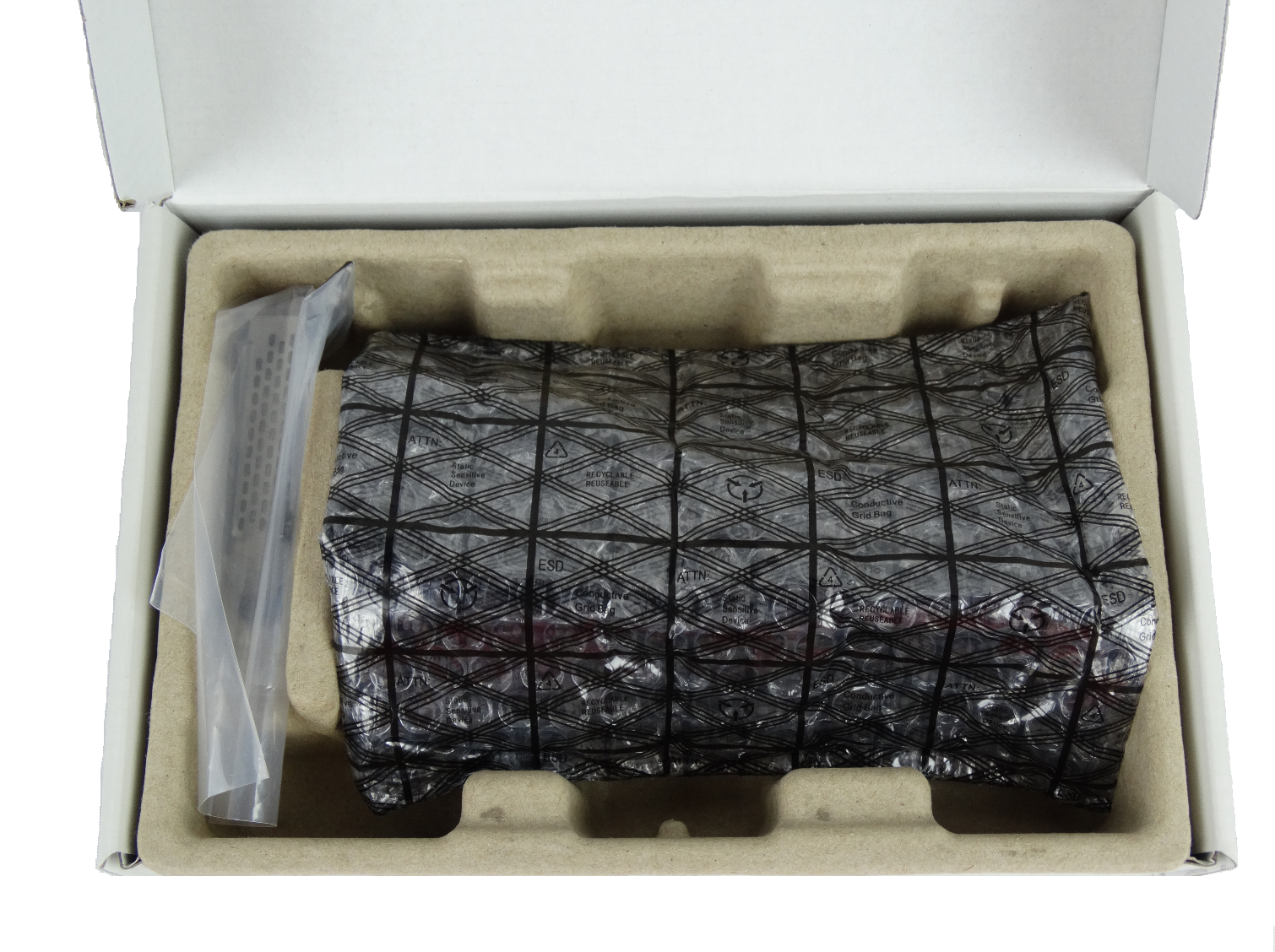
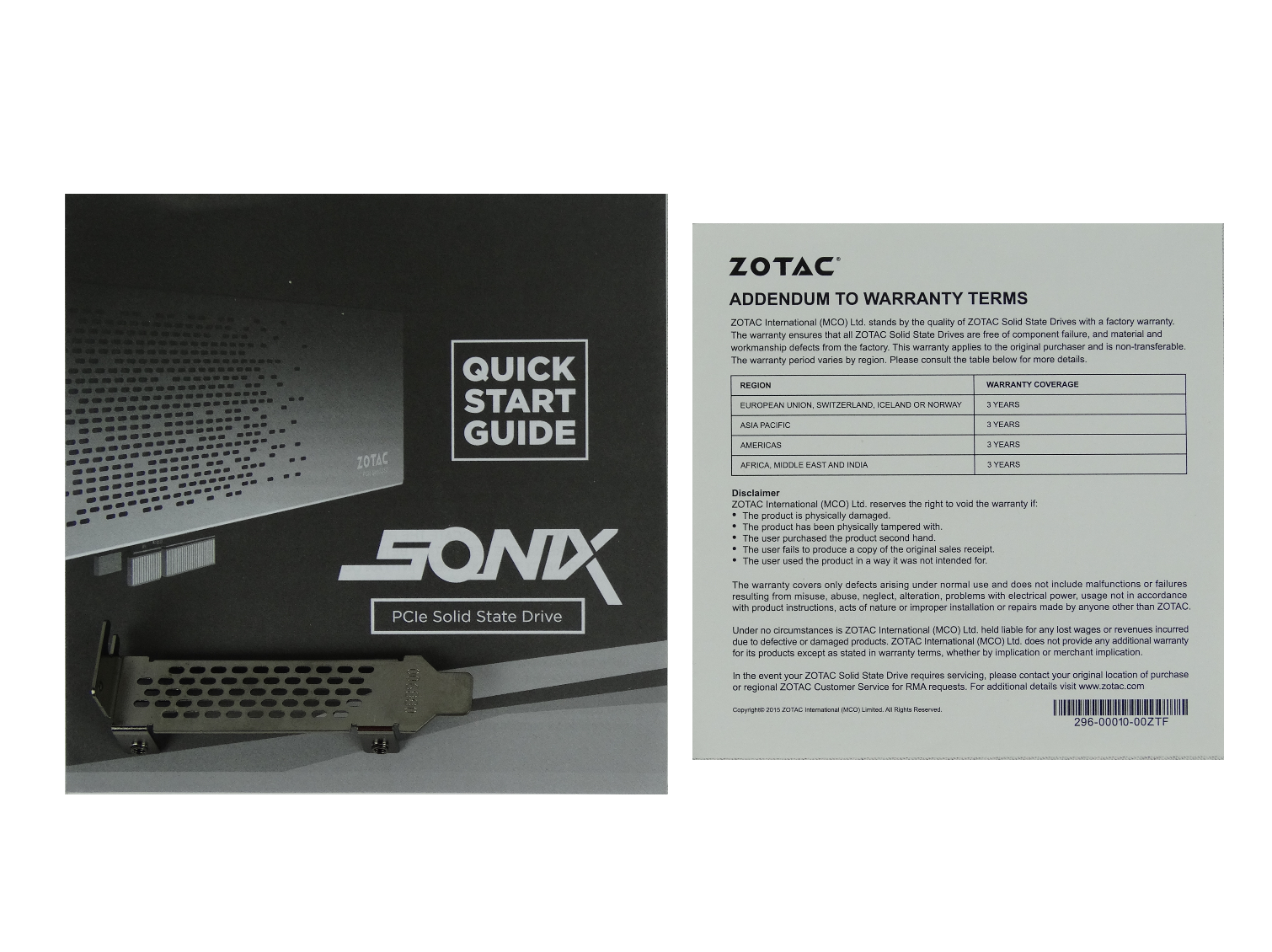
Zotac put together an attractive package for its Sonix. Retail shoppers get to see some information about the product, including a sequential performance estimate. Inside, there's a quick-start guide that walks you through the installation and tells you where to download the drivers required for older operating systems. A second piece of paper outlines the warranty terms.
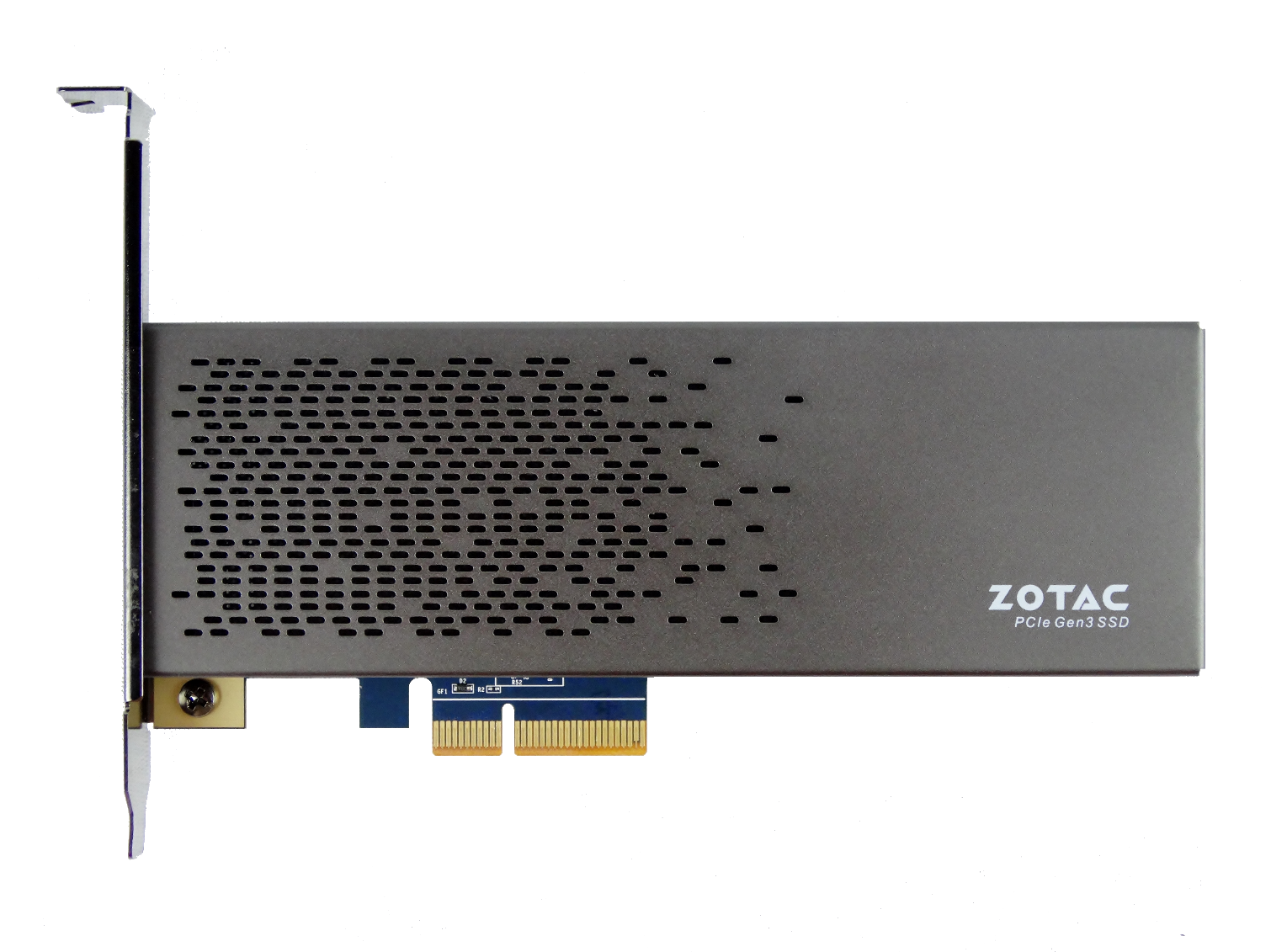
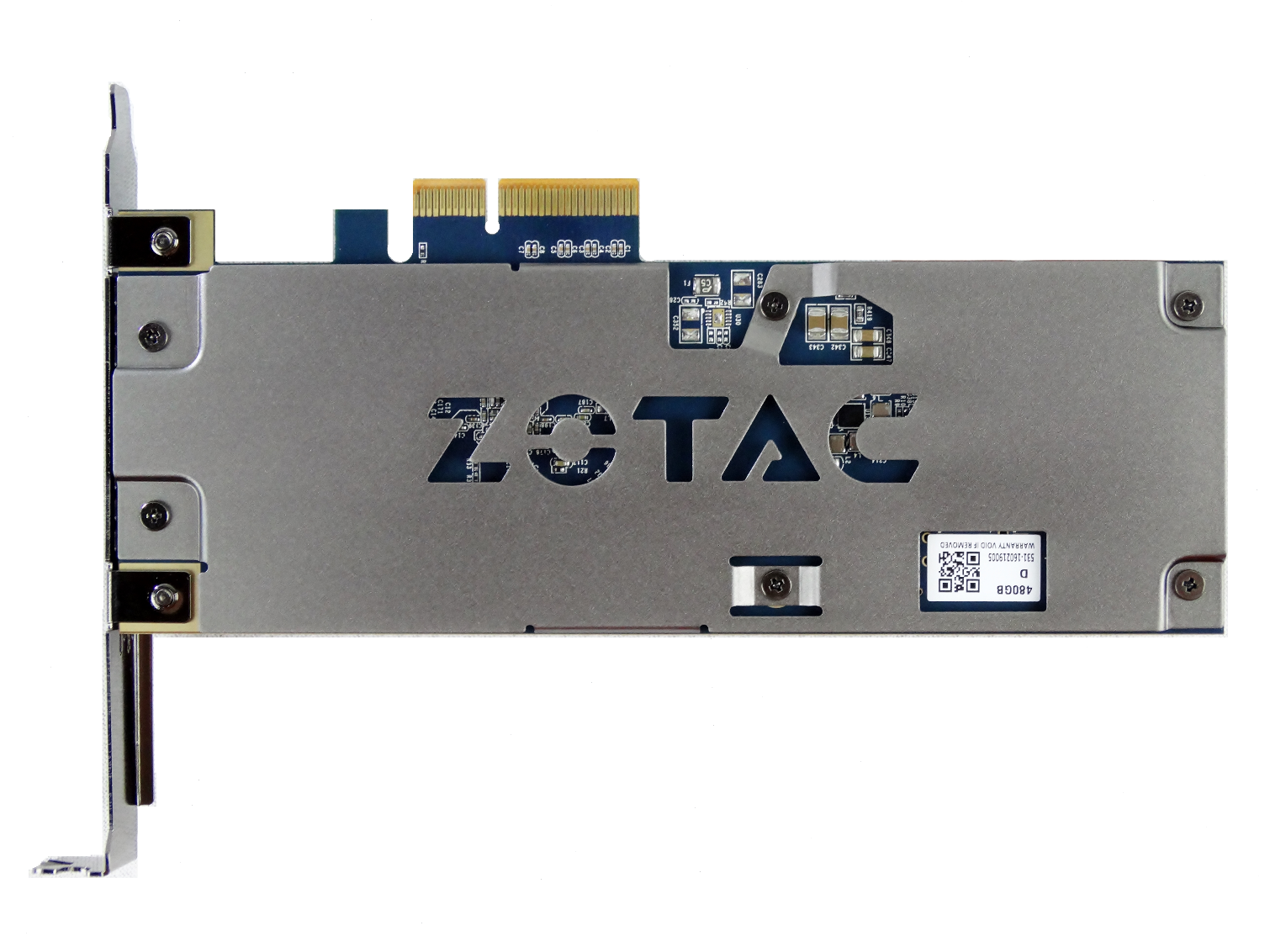
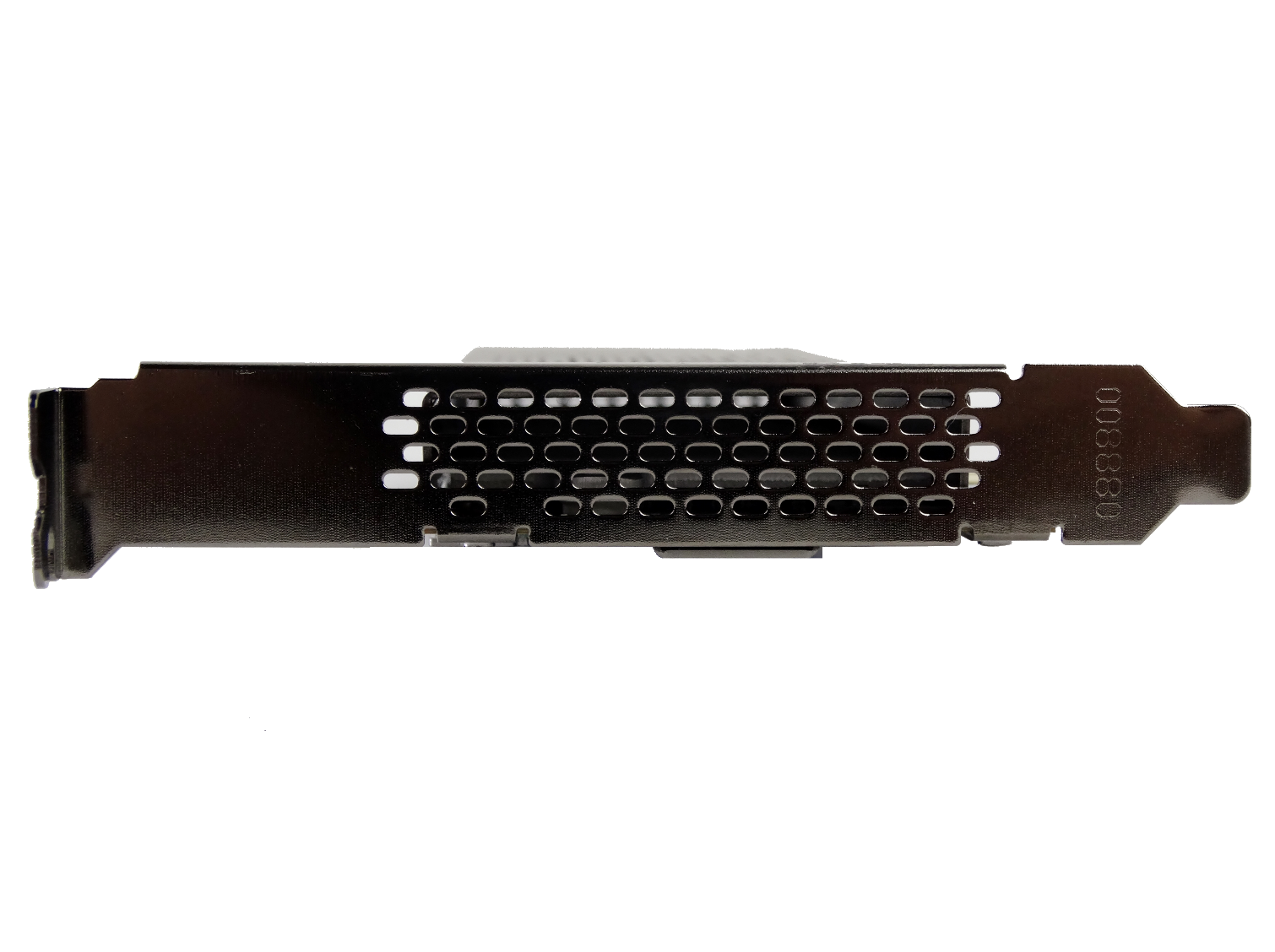
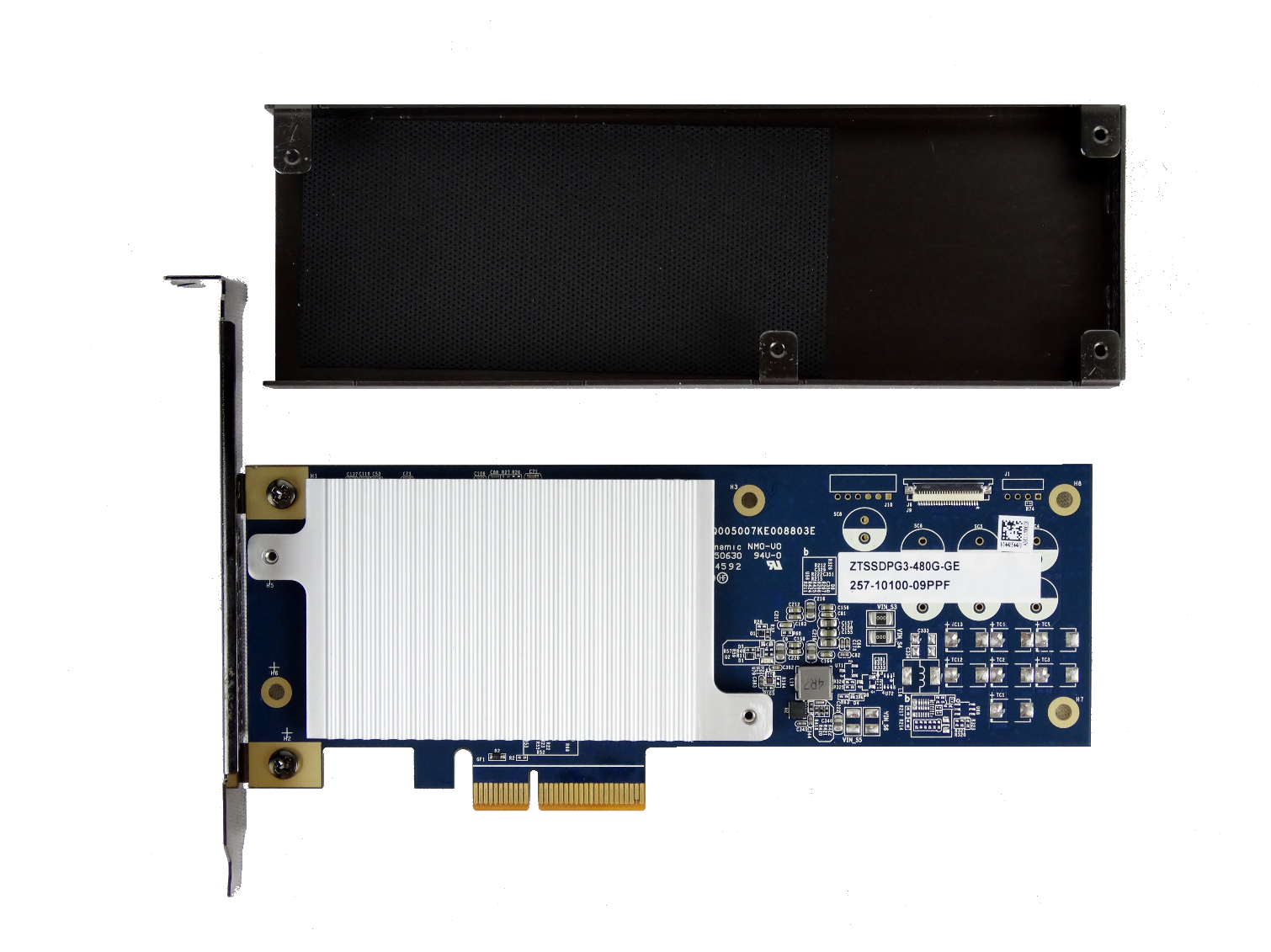
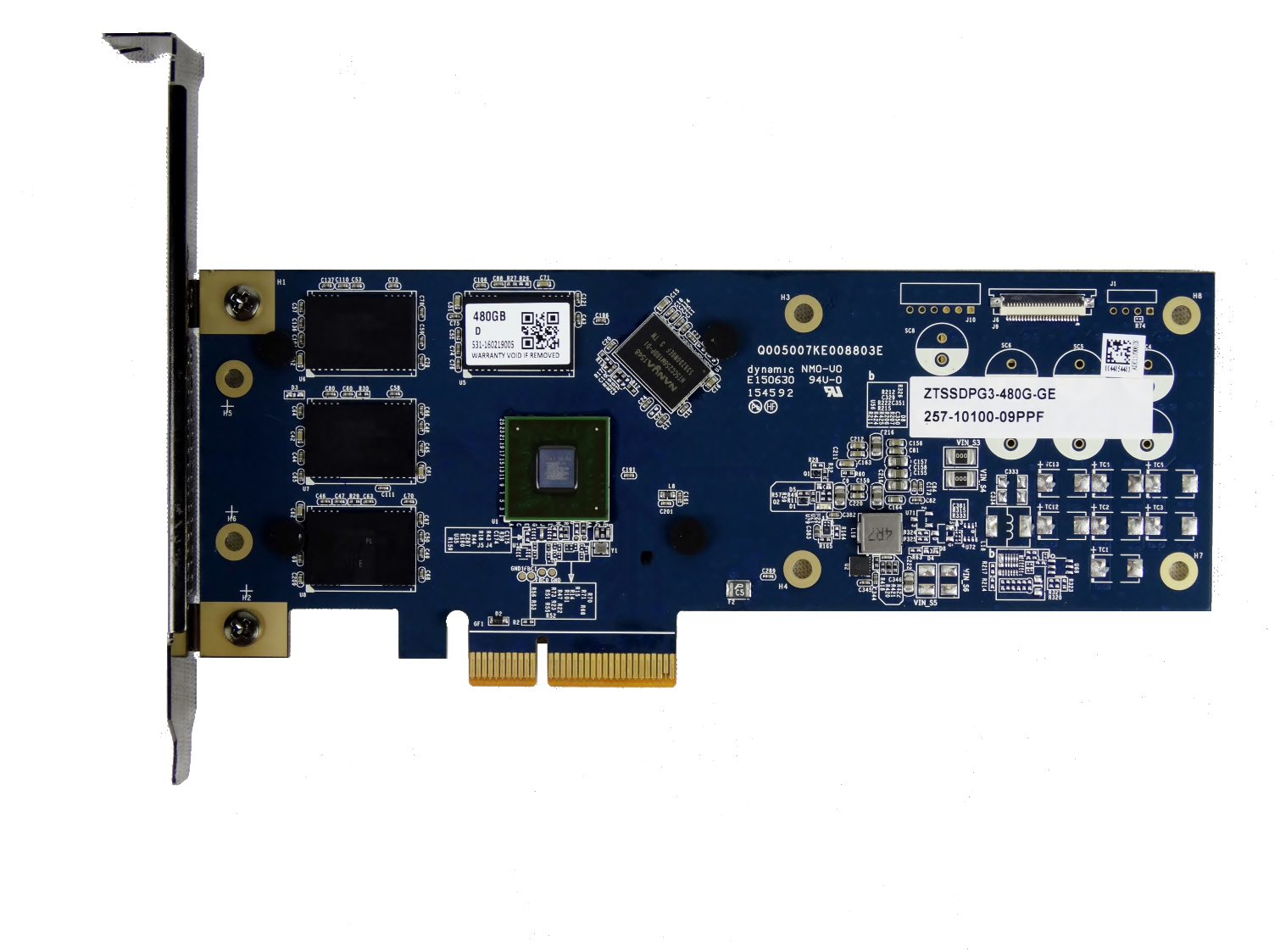
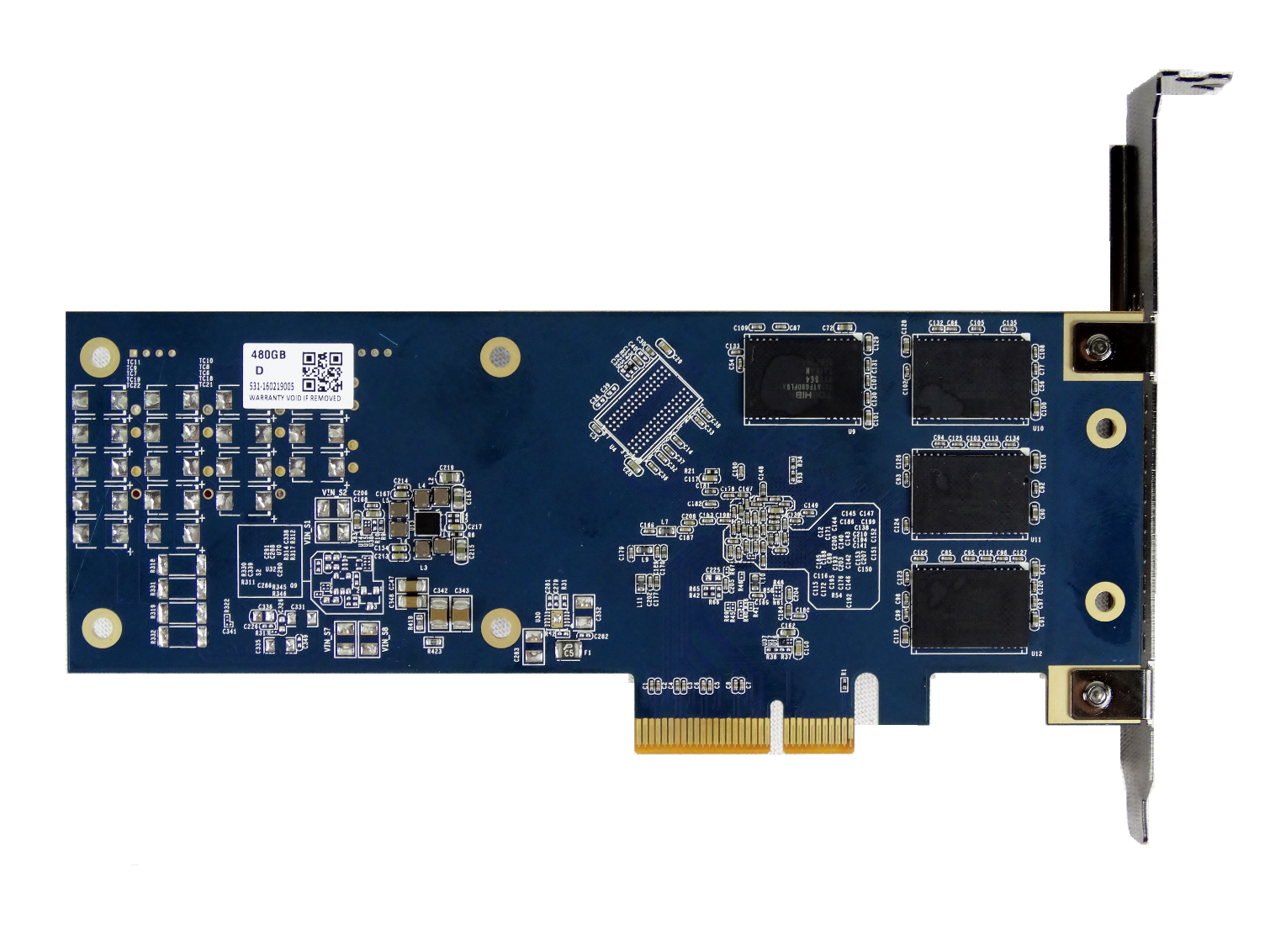
The Sonix employs a half-height form factor and, again, ships with a half-height bracket. A cage of sorts covers the drive, adding to its enthusiast aesthetic. Under it, you'll find a heat sink, DRAM cache and flash memory.
Zotac is basing its Sonix on Phison's add-in card reference design. But the company doesn't utilize all of the available capacitor pads. In time, we should see competitors use the same assembly with more capacitors to enable greater protection against power failure.
The Sonix does support some of the advanced features mentioned earlier, such as SmartFlush technology and GuaranteedFlush. We see dedicated power circuits on both sides of the card that push buffered data to the flash before power to the card is lost.
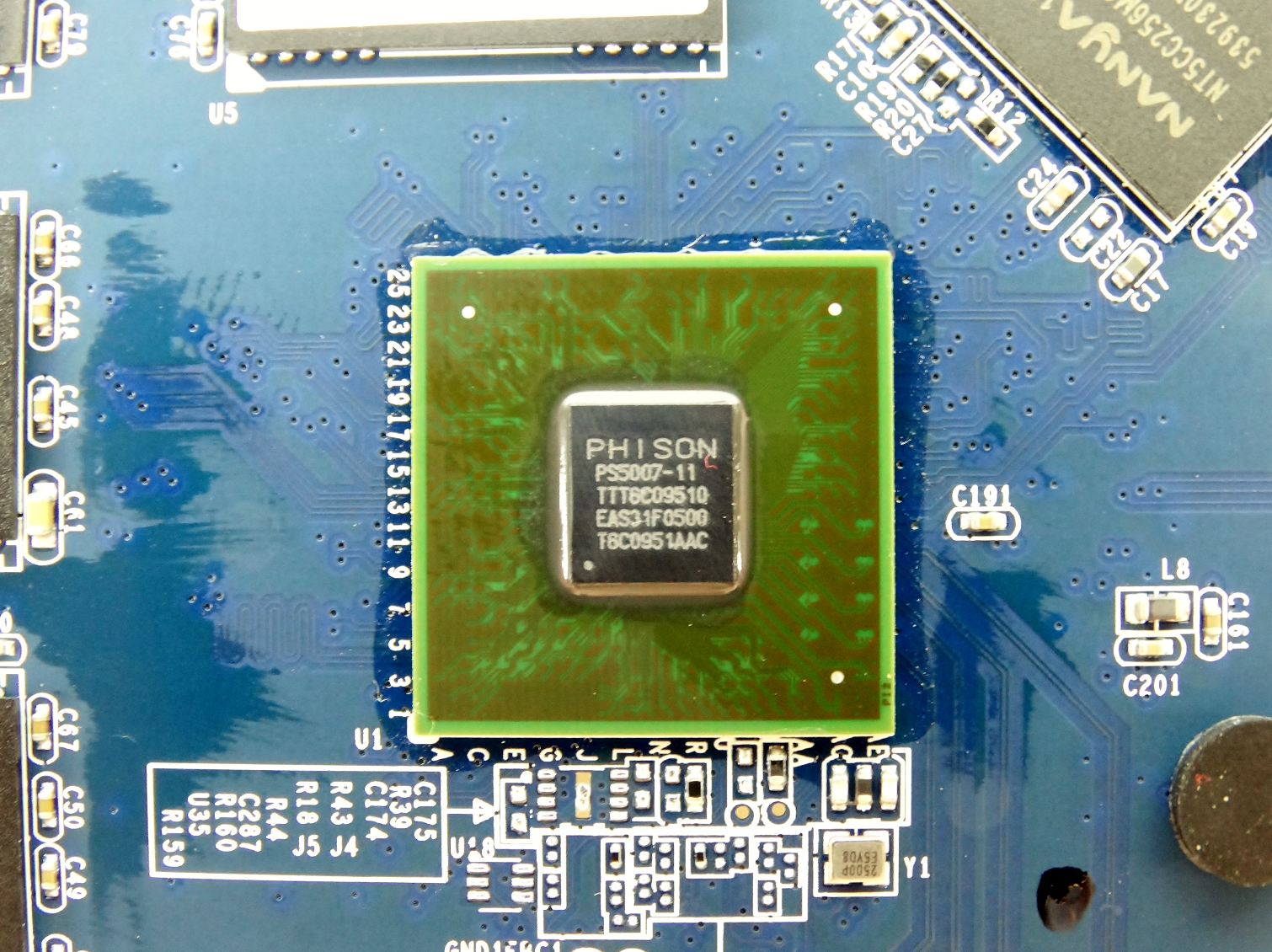
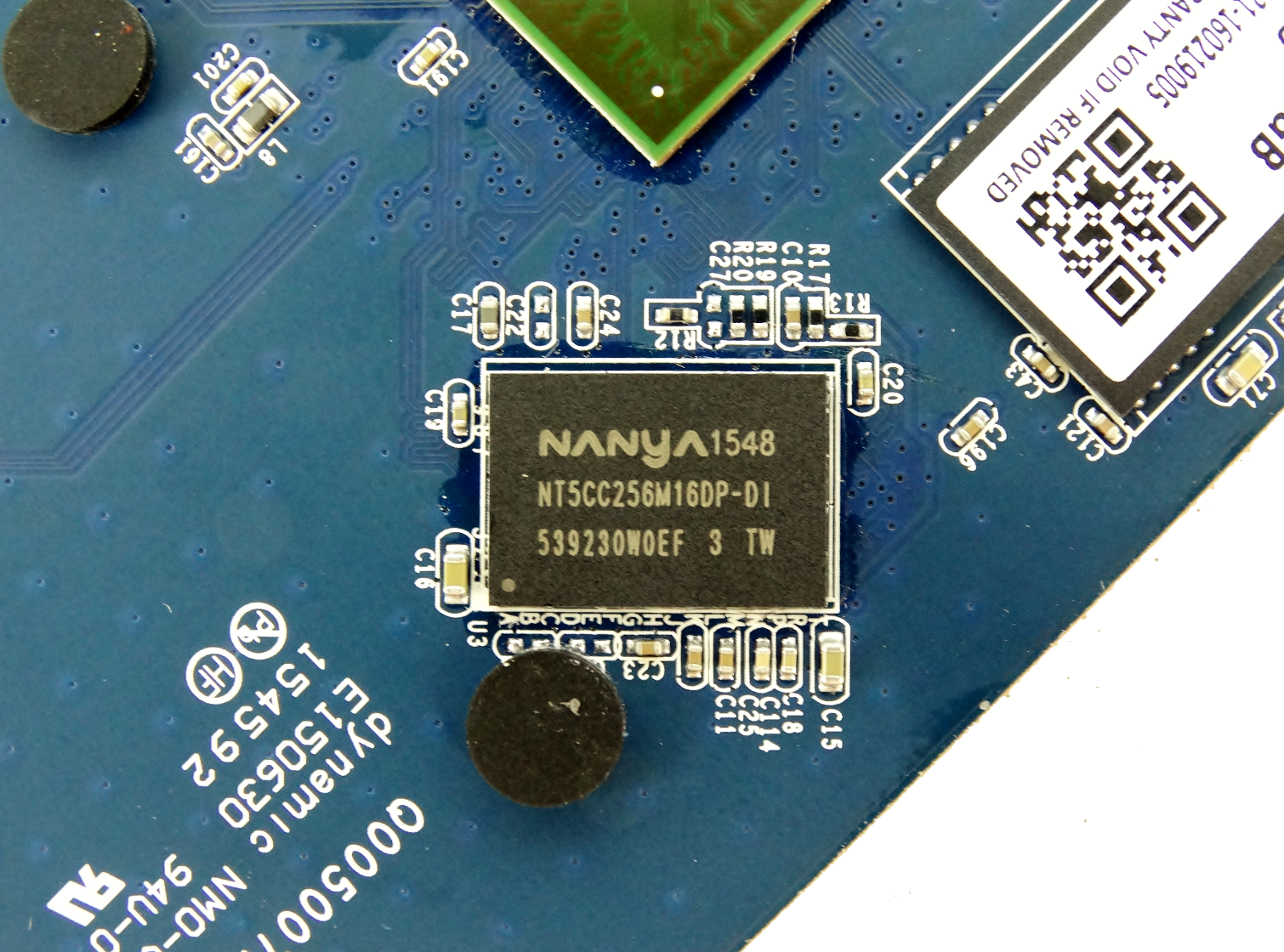
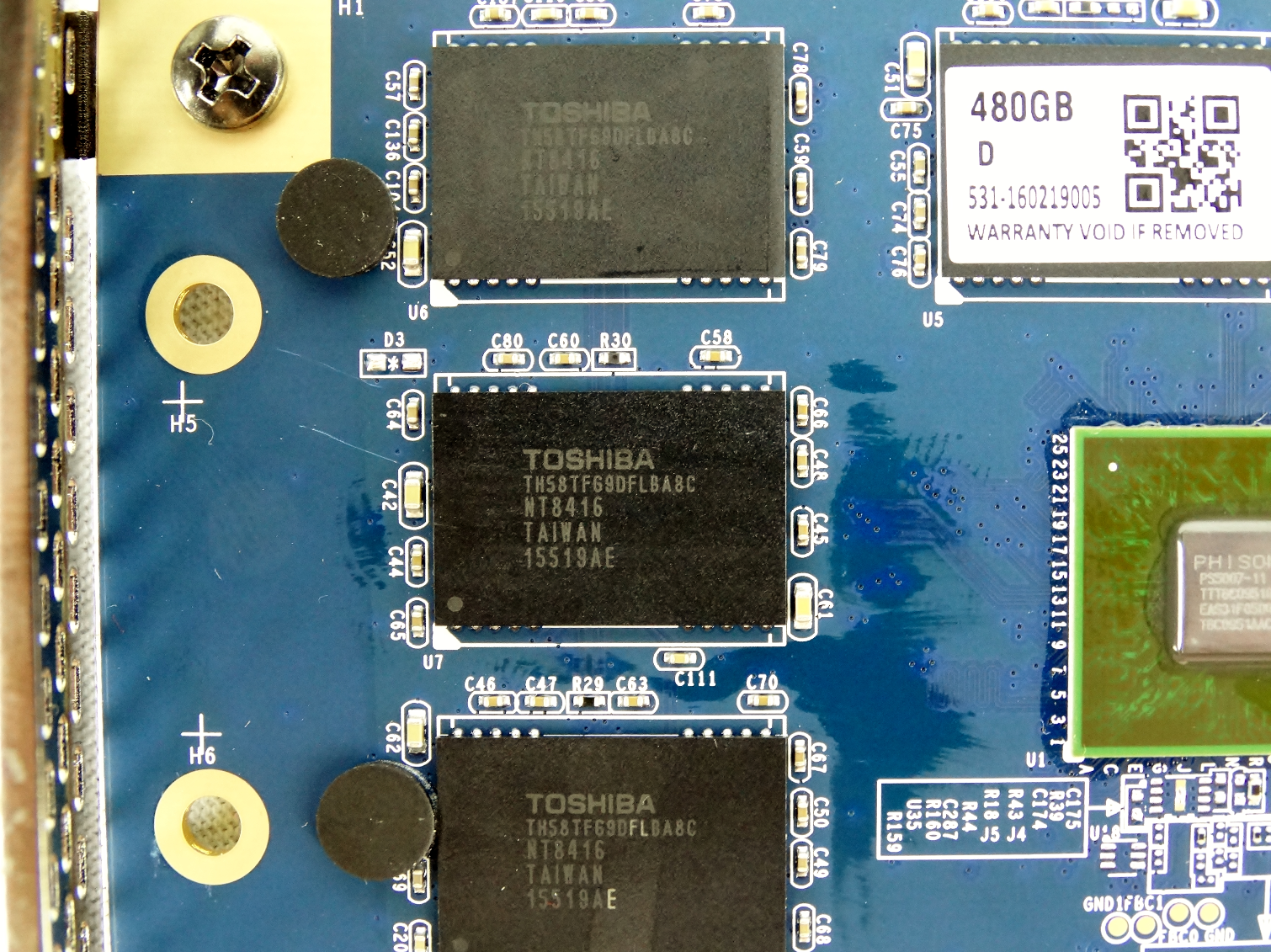
The PS5007-E7 employs flip-chip packaging. Seagate's upcoming controller based on SandForce's technology is similar.
Zotac's 480GB configuration calls for a 512MB DRAM buffer that the company deploys in a single package. In addition, you'll find eight Toshiba 15nm MLC flash packages, four on each side of the PCB.
Driver Installation
NVMe-based SSDs require a software driver to communicate with Windows, same as any other piece of hardware. Windows 8 and newer operating systems include built-in support. Microsoft has an add-on driver for NVMe, but you'll need to install it using the F6 method or build a custom disk/flash drive with the driver included.
Get Tom's Hardware's best news and in-depth reviews, straight to your inbox.
Zotac lists a driver of its own in the quick-start guide. However, we later learned that it's only for installing updates. Phison tells us that the Microsoft driver works just fine.
Both Intel and Samsung have shown us that custom NVMe drivers reduce latency and provide better performance than Microsoft's more compatibility-oriented software. Phison doesn't have an optimized driver of its own for the PS5007-E7 yet, but that could change as it matures.
Compressible Vs. Incompressible Data
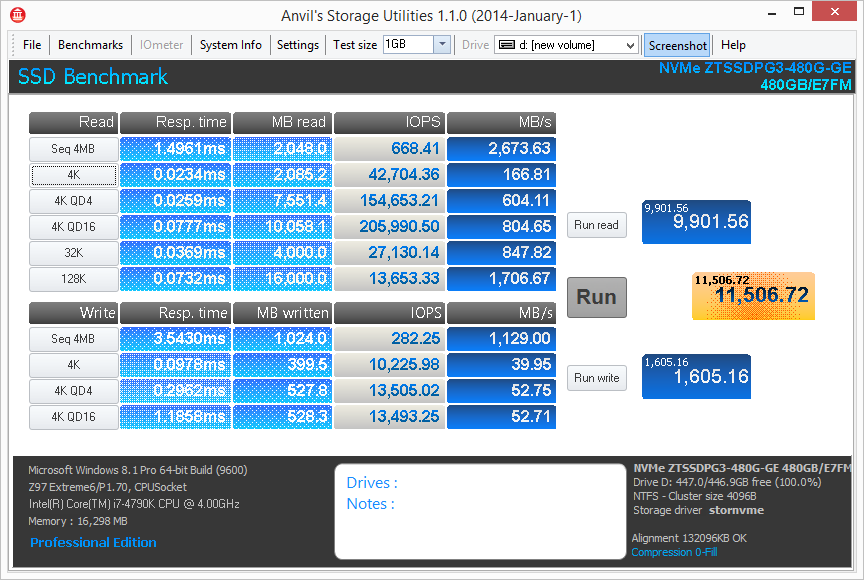
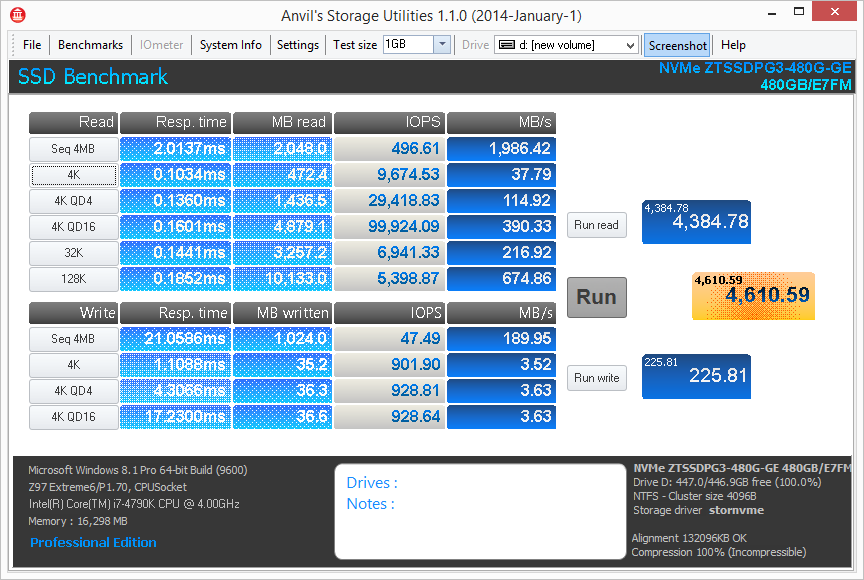
As far back as the S8, we noticed differences in the way Phison's controllers handled compressible and incompressible data. This manifested in synthetic benchmark performance. Real-world applications made it more difficult to spot discrepancies. But you can bet we're going to look more closely at using taxing workloads and targeted block sizes.
Current page: A Closer Look And Inital Performance Testing
Prev Page Specifications, Pricing, Warranty And Accessories Next Page Four-Corner Performance Testing
Chris Ramseyer was a senior contributing editor for Tom's Hardware. He tested and reviewed consumer storage.
-
2Be_or_Not2Be Is it too much to ask that all of your graphs keep the same colors for each product? One page the Intel 750 is light blue; the next page, it's black. Consistency here would help the reader.Reply -
CRamseyer The different colors for the first and later parts of the review is a one off. We added the compressible / incompressible tests to the tests early in the review so there was a shift. In the future I'll just use a red dotted line if adding something special.Reply -
Kewlx25 Correction:Reply
"For a bit of context, AHCI operates on one command at a time, but can queue up to 32 of them. NVMe can operate on as many as 256 commands simultaneously, and each of those commands can queue another 256."
https://en.wikipedia.org/wiki/NVM_Express#Comparison_with_AHCI
NVMe
65535 queues;
65536 commands per queue -
CRamseyer You are correct, that was my fault. I built a test that does 256 / 256 to see how it works. I'll make the correction.Reply -
josejones Good article, Chris Ramseyer.Reply
"Real-world software rarely pushes fast storage devices to their limits"
Chris, I am curious about what all holds back NVMe SSD's from getting their full potential? What all needs to come together to reach their full potential? Will Kaby Lake and the new 200-Series Chipset Union Point motherboards help to get better performance out of the new NVMe & Optane SSD's? I've heard we need a far bigger BUS too. I am holding out for an NVMe SSD that will actually reach the claimed 32 Gb/s or close to it - minus overhead. -
TbsToy So Chris what is your opinion on which of these drives should be used where. Workstation, PC desktop, laptop etc. as the most 'suitable' drive among this group for which machine?Reply
W.P -
TbsToy So Cris which of these drives to you consider to be the most useful with which type of machine, server, workstation, PC, or laptop?Reply
W.P. -
Kewlx25 ReplyGood article, Chris Ramseyer.
"Real-world software rarely pushes fast storage devices to their limits"
Chris, I am curious about what all holds back NVMe SSD's from getting their full potential? What all needs to come together to reach their full potential? Will Kaby Lake and the new 200-Series Chipset Union Point motherboards help to get better performance out of the new NVMe & Optane SSD's? I've heard we need a far bigger BUS too. I am holding out for an NVMe SSD that will actually reach the claimed 32 Gb/s or close to it - minus overhead.
This is my semi-educated guess.
1) The storage chips need to be faster, but they are pretty fast.
2) Controllers need to be faster. Less complicated overhead, better command concurrency, etc
3) There is a latency vs throughput issue. If most programs are making one request at a time and waiting for the response for that request, then you need really low latency to have high bandwidth. On the other hand, if a program makes many concurrent requests, then it just multiplied its theoretical peak bandwidth.
Similar issue with why TCP has a transmit window. Waiting for a response over high latency slows you down. The main difference is TCP pushes data. Reading from the harddrive pulls data. -
CRamseyer Opine will change things a bit because it lowers the QD1 latency. It will make your computer feel faster thus increasing the user experience.Reply
Beyond that, we need a complete overhaul to effectively utilize NVMe in regular computers. The software needs to reach out for more data at the same time. The Windows file systems (other than ReFS) are all aging. We need a big shift in software across the board. It's just like with video games and other software right now. Nothing pushed the limits of the hardware. VR could be change that but I suspect we are still 5 years away from VR for anyone other than enthusiasts.
TbsToy - NVMe accelerates all tasks by lowering latency. We're starting to see the tech ship in notebooks from MSI and Lenovo. Custom desktops from companies like Maingrear and AVA sell with NVMe as well. I would say use it wherever you find a place. The Samsung NVMe drives sell for a very small premium over the SATA-based 850 Pro. You get workstation and in some cases enterprise-level performance capabilities for the rare instances when the load gets that high. -
jt AJ ReplyOpine will change things a bit because it lowers the QD1 latency. It will make your computer feel faster thus increasing the user experience.
Beyond that, we need a complete overhaul to effectively utilize NVMe in regular computers. The software needs to reach out for more data at the same time. The Windows file systems (other than ReFS) are all aging. We need a big shift in software across the board. It's just like with video games and other software right now. Nothing pushed the limits of the hardware. VR could be change that but I suspect we are still 5 years away from VR for anyone other than enthusiasts.
TbsToy - NVMe accelerates all tasks by lowering latency. We're starting to see the tech ship in notebooks from MSI and Lenovo. Custom desktops from companies like Maingrear and AVA sell with NVMe as well. I would say use it wherever you find a place. The Samsung NVMe drives sell for a very small premium over the SATA-based 850 Pro. You get workstation and in some cases enterprise-level performance capabilities for the rare instances when the load gets that high.
cpu is hitting a dead limit due to software not capable of taking advantage of new instruction hence we see 5% improvement on cpu year after year, and thats also because microsoft window legacy support and why so many old software still work on new windows.
when software programmed to take advantage of cpu's new instructions we'll see a huge jump in cpu performance and would mean more data taken from SSD overall just faster.

